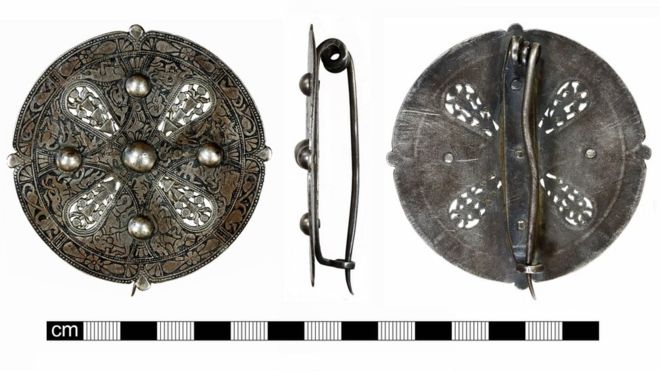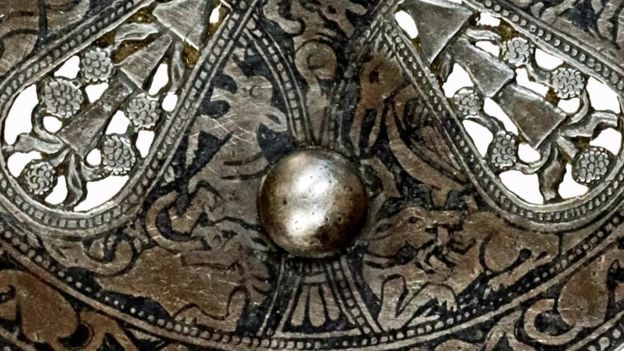Fantastický kousek řemesla, o historické hodnotě nemluvě. Nádhera 
Mysterious Anglo-Saxon brooch
Categories: Finds and rescue research abroad , Nálezy nejenom s detektorem ve Velké Británii a Irsku
The British Museum examined an Anglo-Saxon brooch recovered by a metal detectorist in Norfolk. However, experts have been unable to determine its exact origins.
A year ago in May, a metal detectorist in Great Dunham, Norfolk, found an 1100-year-old brooch.But exactly where the jewel came from will probably remain a mystery forever. The field where the brooch was found had been landscaped by the owner, who had dirt trucked in.
Archaeologists have resigned themselves to the fact that they will probably never be able to find out who the brooch belonged to. The British Museum said it was a discovery of "national significance". They have already begun a process in Norwich which will run until early June, at the end of which the find will probably be declared a treasure. The brooch was found by an inexperienced metal detectorist. He had only been at the hobby for a few days.
The finder thought the brooch was from the Victorian period. But archaeologists discovered the jewel was much older. "The landowner said he had dumped soil on the field to level the ground. The dirt brought in came from central or west Norfolk. The origin of the brooch remains a mystery," said archaeologist Steven Ashley.
The brooch is about seven centimetres across and features a cross. There are also mythical, floral and animal motifs, possibly depicting dogs and boars. Ashley says it is similar to six Anglo-Saxon brooches found in 1978. This is the so-called Pentney Hoard. "It seems to me that all the brooches were made by the same craftsman or were simply made in the same workshop," the archaeologist believes. Such jewellery with a high silver content was worn by people of high status.
The Pentney Hoard was discovered in 1978 at Pentney in Norfolk. The hoard consists of six round brooches. Five of them were made entirely of silver, one of silver and copper alloy. The brooches are decorated in the Trewhiddle style, which was common in the 9th century. This treasure was also examined by experts from the British Museum. Director Hartwig Fischer said such discoveries found by the public are important for Britain to gain insight into its history.
Experts say the brooches were made between 800 and 840. Only the smallest brooch dates to the late eighth century. The jewellery was probably attempted to be hidden during Viking raids on East Anglia in the mid-ninth century. But of course the reality may be different and the treasure may have nothing to do with the Viking invasion.


Sources:
www.bbc.com
www.tricksnews.co.uk
The article is included in categories:







